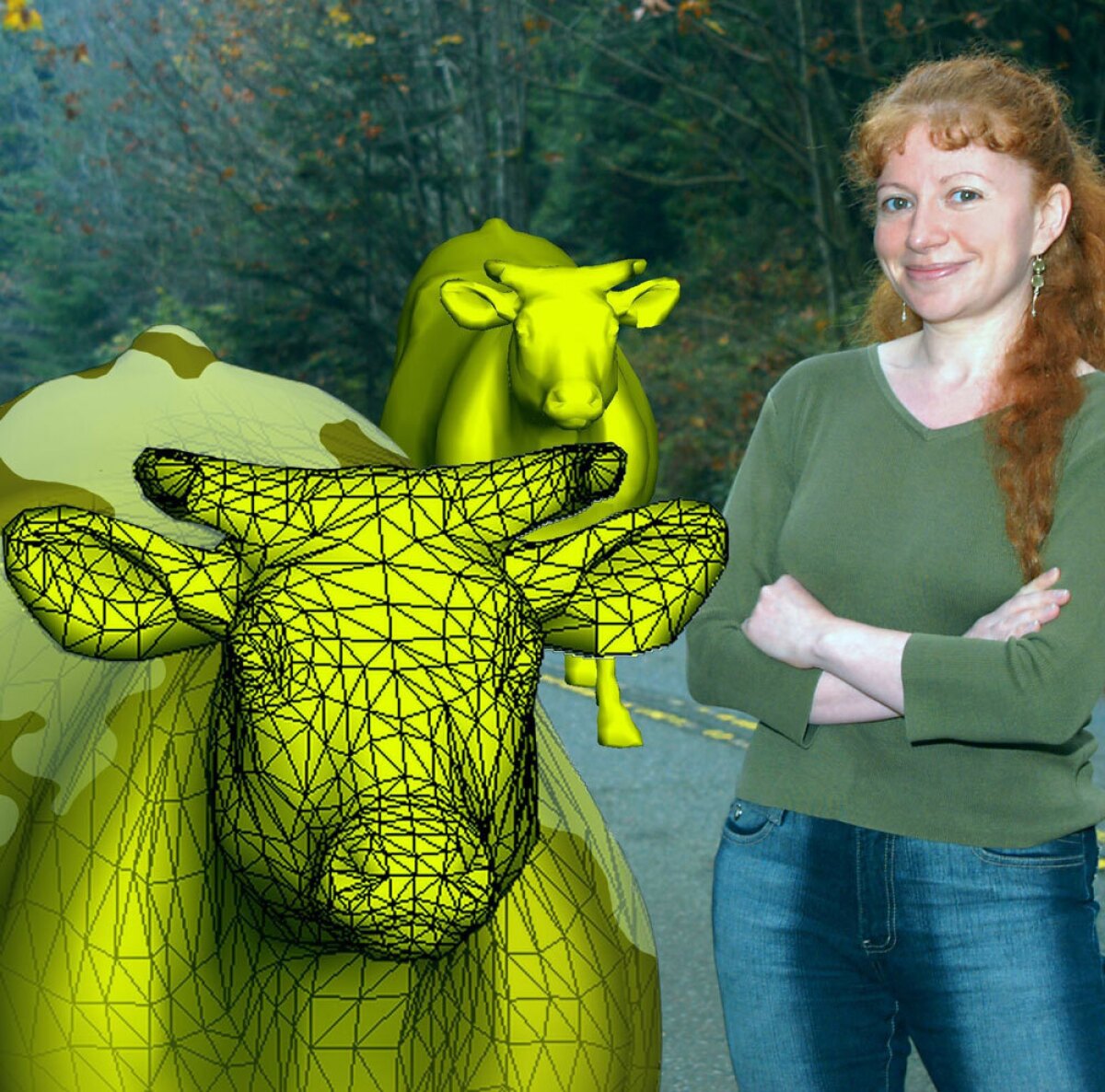Alla Sheffer is a computer science professor at the University of British Columbia (UBC) in Vancouver, Canada, where she has built a powerhouse research center around her specialty: computer graphics. Her research applies insights about human perception and communication of shapes to algorithmic shape processing, yielding novel modeling methods targeted at a broad user base. The algorithms she has developed accelerate and simplify the creation of virtual and real shapes across multiple domains, including fashion and product design.
Sheffer is a Fellow of the Royal Society of Canada and an IEEE Fellow. Her other recent honors include the Canadian Human Computer Communications Society 2018 Achievement Award, and a UBC Killam Research Award (2019). In addition, last year she was inducted into the ACM SIGGRAPH Academy, an honorary group of individuals who have made significant contributions to the field of computer graphics. Sheffer was recognized for her contributions in geometry processing and interactive geometric modeling.
Sheffer is also an Amazon Scholar, an expanding group of academics who work on large-scale technical challenges for Amazon while continuing to teach and conduct research at their universities. Sheffer has an affinity for meshed cows and dragon stuffies, as both are excellent examples of applications of computer graphics algorithms.
We recently spoke with Professor Sheffer about the field of computer graphics, her career, and her work with Amazon Fashion on its recently announced “Made for You” Custom T-shirt.

What drew you to computer graphics?
I took a computer graphics course during my undergrad studies and was enamored by the ability that graphics algorithms provide for folks with no art skills to create beautiful content. I then drifted into doing more engineering-oriented research, such as computer aided design and finite element mesh generation, but came back to graphics, as I just find it more visually appealing and exciting.
One of the things I find exciting about graphics is that many technical problems that arise when creating virtual content directly correlate to real-world fabrication challenges. For instance, algorithms for computing texture atlases for graphics applications are directly applicable to fabrication of stuffed toys. In both settings, one needs to compute 2D charts, or patterns, that can be stitched together in three dimensions to form the desired virtual shape or real stuffed toy.
How does your work impact Amazon?
I am helping Amazon Fashion solve shopping challenges, such as size and fit. Most recently we launched Made for You, which is a new way for customers to shop in “Size You” using virtual fit technology that allows customers to create a custom T-shirt to their exact measurements and style preferences.
Traditionally, creating made-to-measure garments requires an expert pattern maker to take individual customer body measurements, modify the original garment patterns with these measurements in mind, and have a single custom garment manufactured. The pattern maker would then test how well the resulting garment fits a mannequin with your dimensions and iteratively adjust the patterns until they are satisfied with the fit. The time and expertise required to generate well-fitted, made-to-measure garments means that very few customers can afford to purchase such clothing.
With Made for You we are using technology to make it easier and more affordable for all customers to order made-to-measure, customizable garments. Providing the algorithmic support to achieve this goal requires solving two hard research problems. First, what does it even mean for a garment to look, or fit, the same on two different people? To answer this question, we need to understand how customers perceive fit. Once we know what the customer expects, how do we create the garment that the customer wants? Or specifically, how do we generate the patterns for this desired garment? These are two separate problems, and we are looking at both.

How did you become interested in garments?
I find clothes fascinating – they are ubiquitous yet ridiculously hard to design to fit well even for just traditional sizes. While I have no formal garment design or pattern-making background, I learned a little bit about pattern making and sewing from my mom. She was a semi-professional tailor and I grew up in a house where tailoring magazines, patterns, and sewing tools were all around. I never expected this knowledge to be useful in my professional life, but here I am.
What led you to become an Amazon Scholar?
I love my university position; it gives me the opportunity to train undergraduate and graduate students and enables me to research fundamental open problems in computer graphics and related fields. But it lacks the immediate satisfaction of seeing your inventions being used by the general public. I found the opportunity to work on practical problems that Amazon provides exciting. The opportunity to impact how millions of people purchase clothing is tremendously exciting. I am also personally looking forward to the day where I can purchase clothing that perfectly fits me without first having to try on dozens of ill-fitting garments.
The opportunity to impact how millions of people purchase clothing is tremendously exciting.
Does working at Amazon benefit your academic research?
Yes, it does. I learn a lot from the amazing researchers, developers, and garment design professionals I am working with. I am also inspired by the workflow processes that Amazon uses. Adopting some of them for the academic environment would be very useful.
What advice would you give to someone interested in computer graphics as a career?
Do it! Computer graphics is cool and a computer graphics background provides you with a lot of work opportunities both inside and outside the traditional movie or video game industries. To be successful as a graphics researcher or developer you need to have a strong background in computer science theory and mathematics, and to be a very, very good programmer. In graphics, being able to code complex algorithms and to make them run as fast as possible is critical. Most universities have courses dedicated to computer graphics. Take them. Graphics has many different sub-areas – such as geometric modeling, which is what I do. See which ones attract you and try to take specialized courses in those.





